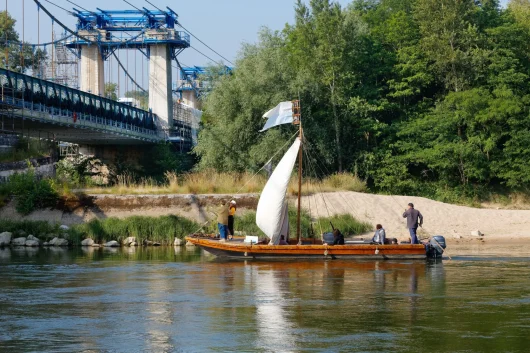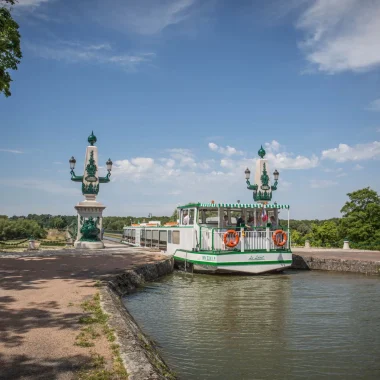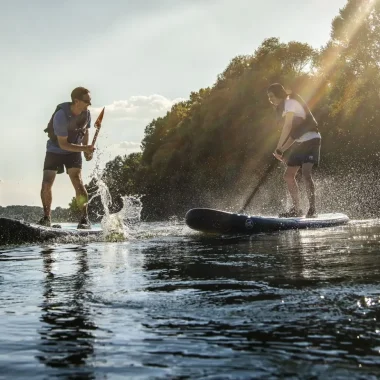RIVER TRANSPORT ON THE LOIRE: A THRIVING TRADITION
From the 17th to the 19th century, when bridges were still rare, the Loire was the main commercial route for transporting goods and also served as a passageway for the inhabitants of the villages along the river. The royal river brought about the creation of the Marine de Loire and a multitude of traditional boats, which still exist today.
THE STORY OF TRADITIONAL RIVER TRANSPORT ON THE LOIRE
Before the arrival of bridges and railways, the Loire was a major trade route. Hemp, tuffeau stone, spices and wine were all transported from one end of the river to the other, between Orléans and Nantes. It was also a rich source of fish: salmon, pike and pike-perch abounded, much to the delight of the locals and the many professional fishermen of the past.
THE DIFFERENT TRADITIONAL FLAT-BOTTOMED BOATS
The common features of the famous traditional Loire boats are their flat bases. They are well-suited to river navigation, with a shallow draught. The largest boat on the Loire, the Gabare is a boat with a white or red sail, weighing around 22 tonnes that was used to transport goods. The smaller Toue boat is a typical fishing vessel. It can be “Cabanée” (featuring a small cabin). These boats are still used for fishing, and you can climb aboard for a trip.
EMBARK ON A TRADITIONAL LOIRE BOAT
Aboard a traditional boat such as a Toue or Fûtreau, explore the landscapes of the Loire and hear enthusiasts tell you about its past and present history. A historic, authentic and friendly experience.

The first step: familiarise yourself with the funny names of the flat-bottomed boats: Toue Cabanée, Fûtreaux, Plate, Gabare… The best way is simply to hop on board for a few hours along the Loire, with departures from small ports such as Candes Saint-Martin, Chaumont-sur-Loire, Blois and Sigloy, opposite the Abbey of Saint-Benoît-sur-Loire.
The captains are passionate and never short of anecdotes, promising you a captivating trip. And you won’t just be sitting around! Your captain will involve you in manoeuvres such as hoisting the sail or pulling the oars. Your adventure may even end with an aperitif together, on the way back or on a small island on the Loire.
Around Orléans
Near Orléans, in Meung-sur-Loire, come aboard one of the Cœur de Loire boats. Claire and Denis will take you on a trip along the Loire.
And if you fancy extending the adventure, opt for a night on the water. The Bateau-Atelier, a rowing boat, will be your cosy nest with the promise of a magical view over the river!
Around Blois
Set sail on the Loire from the old port of Chambord. From sunrise to sunset, the Marins du Port de Chambord invite you to cast off.
Aboard their boats, they’ll take you on a voyage of discovery of the Loire and its magnificent landscapes.

Around Tours
After strolling through the charming narrow streets of Candes-Saint-Martin, listed as one of the Most Beautiful Villages in France, set off on a Loire River cruise aboard L’Amarante.
Take a guided cruise or a lunch or dinner cruise and fall under the spell of the river where the Loire meets the Vienne. Between the sandbanks, the ballet of the birds and the magic of the landscapes, the grandiose Loire awaits you!
CROSS THE LOIRE FROM ONE BANK TO THE OTHER IN A TRADITIONAL BOAT
Before the advent of bridges spanning the Loire, people crossed the river using the famous Passeurs de Loire, which acted as ferries.
If you cycle along the Loire à Vélo route near La Chapelle-sur-Loire, you can cross from one bank of the Loire to the other free of charge on the Toue “Brise Chapelonne” .














